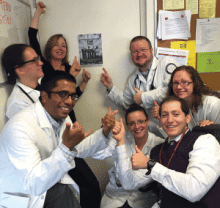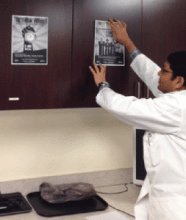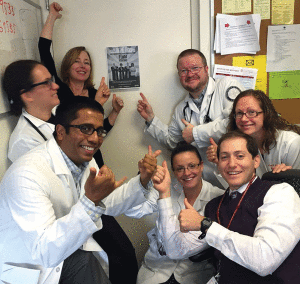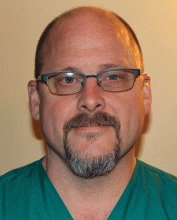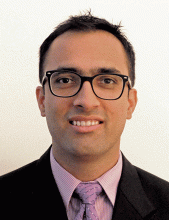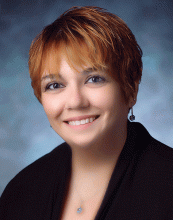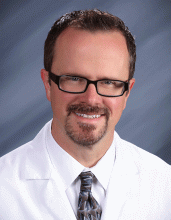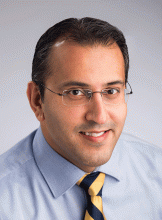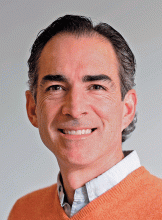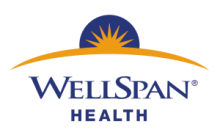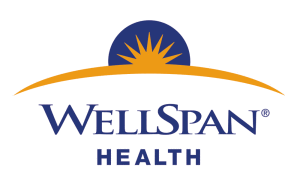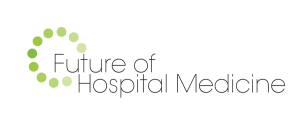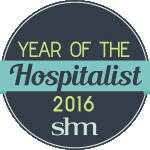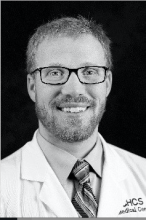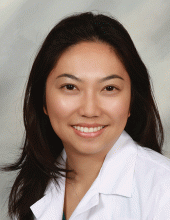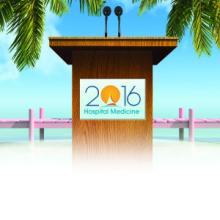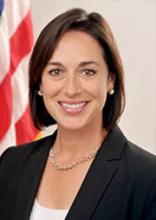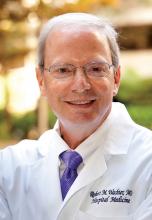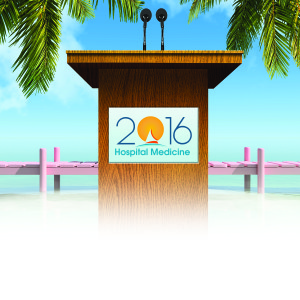User login
SHM’s Twitter Contest Encourages Appropriate Antibiotic Prescribing
- Identify opportunities to engage with all hospital-based clinicians to improve antibiotic stewardship in your hospital.
- Pay attention to appropriate antibiotic choice and resistance patterns and identify mechanisms to educate providers on overprescribing in your hospital.
- Consider the following:
Adhere to antibiotic treatment guidelines.
Track the day.
Set a stop date.
Reevaluate therapy.
Streamline therapy.
Avoid automatic time courses.
Not only did participants receive recognition for their efforts hanging up the posters and engaging their teams, the posters’ presence in various hospitals and offices around the country created thousands of impressions among hospital-based staff and others directly responsible for proper antibiotic prescribing.
Although the contest is over, you can still help facilitate culture change related to appropriate antibiotic prescribing. Follow SHM on Twitter @SHMLive, and continue to visit FightTheResistance.org for the latest updates on the campaign and new tools to promote antibiotic stewardship. TH
Brett Radler is SHM’s communications coordinator.
- Identify opportunities to engage with all hospital-based clinicians to improve antibiotic stewardship in your hospital.
- Pay attention to appropriate antibiotic choice and resistance patterns and identify mechanisms to educate providers on overprescribing in your hospital.
- Consider the following:
Adhere to antibiotic treatment guidelines.
Track the day.
Set a stop date.
Reevaluate therapy.
Streamline therapy.
Avoid automatic time courses.
Not only did participants receive recognition for their efforts hanging up the posters and engaging their teams, the posters’ presence in various hospitals and offices around the country created thousands of impressions among hospital-based staff and others directly responsible for proper antibiotic prescribing.
Although the contest is over, you can still help facilitate culture change related to appropriate antibiotic prescribing. Follow SHM on Twitter @SHMLive, and continue to visit FightTheResistance.org for the latest updates on the campaign and new tools to promote antibiotic stewardship. TH
Brett Radler is SHM’s communications coordinator.
- Identify opportunities to engage with all hospital-based clinicians to improve antibiotic stewardship in your hospital.
- Pay attention to appropriate antibiotic choice and resistance patterns and identify mechanisms to educate providers on overprescribing in your hospital.
- Consider the following:
Adhere to antibiotic treatment guidelines.
Track the day.
Set a stop date.
Reevaluate therapy.
Streamline therapy.
Avoid automatic time courses.
Not only did participants receive recognition for their efforts hanging up the posters and engaging their teams, the posters’ presence in various hospitals and offices around the country created thousands of impressions among hospital-based staff and others directly responsible for proper antibiotic prescribing.
Although the contest is over, you can still help facilitate culture change related to appropriate antibiotic prescribing. Follow SHM on Twitter @SHMLive, and continue to visit FightTheResistance.org for the latest updates on the campaign and new tools to promote antibiotic stewardship. TH
Brett Radler is SHM’s communications coordinator.
SHM Announces 2016 Awards of Excellence Winners
The Society of Hospital Medicine (SHM) created the Awards of Excellence Program to honor its members whose exemplary contributions to the hospital medicine movement merit acknowledgment and celebration. In honor of their achievements, recipients of each Award of Excellence receive an all-expense paid trip to SHM’s annual meeting.
Award recipients also receive recognition on stage in front of friends, family, and colleagues at SHM’s annual meeting, in The Hospitalist, and on www.hospitalmedicine.org.
Congratulations to this year’s winners:
Clinical Excellence
Mark Thoelke, MD, SFHM
Dr. Thoelke became the first hospitalist at Barnes-Jewish Hospital in 1998 and helped form the Hospital Medicine Division of the Washington University School of Medicine in St. Louis in 2000, one of the first divisions in the U.S. The division is now composed of 70 physicians and eight nurse practitioners and consistently turns in superior performances on clinical outcomes as measured by UnitedHealthcare. The division has led the way with innovations in care models and teaching models and was one of the first to offer a sub-internship experience on the non-teaching service and one of the first to offer co-management with their oncology service in 2002. Dr. Thoelke still spends two-thirds of his time on clinical services and states that his job satisfaction comes largely from patient care and teaching.
Humanitarian Services
Bijay Acharya, MBBS, MD
Dr. Acharya works as a hospitalist at Massachusetts General Hospital in Boston and is currently completing the Harvard Medical School/CRICO Fellowship in Patient Safety and Quality. His humanitarian work started when he was in medical school, where he led many health camps in extremely poor villages, ran blood-donation drives, and established the poor-patient fund. After graduation, Dr. Acharya, with his friends, worked to establish a nonprofit clinic named NyayaHealth (now Possible) to serve the healthcare needs of a very remote district in rural Nepal. Prior to the clinic, there was no physician for more than a quarter million people. Recently, after the massive earthquake in Nepal, Dr. Acharya led the relief efforts for the earthquake victims. Dr. Acharya strongly believes in the capacity of hospitalists to be strong advocates for their patients, peers, and communities, both locally and globally.
Non-Physician
Tiffani M. Panek, MA, SFHM, CLHM
Panek is the hospitalist administrator for the Division of Hospital Medicine at the Johns Hopkins Bayview Medical Center in Baltimore. She is a Senior Fellow in Hospital Medicine and has also received her Certificate of Leadership in Hospital Medicine (CLHM) from SHM. She has been at Johns Hopkins for more than 12 years and has been instrumental in the significant growth and success of the Division of Hospital Medicine. Within SHM, she has been a member of the Practice Administrators Committee for three years and was recently elected to a two-year term as vice president of SHM’s Maryland Chapter. She is the first administrator to be elected to chapter leadership, to receive the CLHM, and to have an abstract accepted at an SHM annual meeting.
Outstanding Service
Thomas McIlraith, MD, SFHM, CLHM
Dr. McIlraith is the chairman of the Hospital Medicine Department at Mercy Medical Group in Sacramento, Calif. He improved patient flow between admissions and rounding with a novel operational system called Central Coordination, and it is now the standard for the Dignity Health facilities in Sacramento. The system markedly improved ED response, on-call hospitalist stress, and patient continuity. He has led many other quality and operational improvements, including unit-based rounding, rapid-response team development, and staff restructuring to improve physician coverage. Most recently, he became a leader in the Patient Experience Movement by developing the “Cognitive/Emotional Disconnect” model for understanding patient experience in hospital medicine. He is a member of the SHM Practice Management Committee.
Research
Vineet Chopra, MD, MSc, FHM
Dr. Chopra is an assistant professor of medicine and research scientist in the Patient Safety Enhancement Program at the University of Michigan and Ann Arbor VA Medical Center. Dr. Chopra’s research efforts are centered on improving the safety of hospitalized patients by preventing hospital-acquired complications. Using peripherally inserted central catheters (PICCs) as a model for this inquiry, his work has focused on quantifying current use of PICCs in hospitalized patients, estimating the risk of complications, and defining innovative ways to improve decision making for these devices. His research has been cited 1,962 times (1,580 times since 2010). He is an associate editor of The American Journal of Medicine and the Journal of Hospital Medicine and will serve as chair of SHM’s Research Committee in 2016.
Teaching
Alberto Puig, MD, PhD, SFHM
Dr. Puig has spent his career fully devoted to medical and clinical education. He is an associate professor of medicine at Harvard Medical School in Boston and director of the core educator faculty in the Department of Medicine at Massachusetts General Hospital, where he leads a unique group of physician-teachers fully devoted to clinical education. He is a regular discussant on educational programs for the academy at Harvard Medical School, and his contributions to medical education and clinical hospital teaching have made him a celebrated teacher and educator. Dr. Puig has played an important role at SHM and in the field of hospital medicine through his efforts as a medical educator; he is an avid student of the history of medicine and has been a frequent presenter at SHM’s annual meeting on this topic.
Teamwork
WellSpan Health, Active Bed Management
With the launch of ABM, Dr. Pfeiffer and Dr. Landis hoped to decrease ED length of stay by standardizing the hospitalist processes surrounding admission orders in computerized physician order entry. Ultimately, ABM at WellSpan has maintained the fastest time-to-admission order entry for any service at York Hospital—a decrease to 10 minutes from 80—with less variation for two years. ABM has also sustained national benchmark ED length of stay when the hospital is functioning at general capacity.
ABM also became instrumental in process and outcome objectives from a number of other hospital-wide initiatives. With ABM, more than 90% of a physician’s patient load is on one medical unit (up from 40%), which allowed the hospitalists to implement structured interdisciplinary bedside rounds (SIBR) on all medical units in York and Gettysburg hospitals. The success of ABM and SIBR allowed a transition-of-care project to focus on efficient discharges. Furthermore, Dr. Pfeiffer led a direct admission task force to improve direct admission referrals, safety, and acceptance, the number of which has since doubled. Without hospitalists’ ongoing leadership and effective teamwork, these significant improvements would not have been possible or sustained. TH
The Society of Hospital Medicine (SHM) created the Awards of Excellence Program to honor its members whose exemplary contributions to the hospital medicine movement merit acknowledgment and celebration. In honor of their achievements, recipients of each Award of Excellence receive an all-expense paid trip to SHM’s annual meeting.
Award recipients also receive recognition on stage in front of friends, family, and colleagues at SHM’s annual meeting, in The Hospitalist, and on www.hospitalmedicine.org.
Congratulations to this year’s winners:
Clinical Excellence
Mark Thoelke, MD, SFHM
Dr. Thoelke became the first hospitalist at Barnes-Jewish Hospital in 1998 and helped form the Hospital Medicine Division of the Washington University School of Medicine in St. Louis in 2000, one of the first divisions in the U.S. The division is now composed of 70 physicians and eight nurse practitioners and consistently turns in superior performances on clinical outcomes as measured by UnitedHealthcare. The division has led the way with innovations in care models and teaching models and was one of the first to offer a sub-internship experience on the non-teaching service and one of the first to offer co-management with their oncology service in 2002. Dr. Thoelke still spends two-thirds of his time on clinical services and states that his job satisfaction comes largely from patient care and teaching.
Humanitarian Services
Bijay Acharya, MBBS, MD
Dr. Acharya works as a hospitalist at Massachusetts General Hospital in Boston and is currently completing the Harvard Medical School/CRICO Fellowship in Patient Safety and Quality. His humanitarian work started when he was in medical school, where he led many health camps in extremely poor villages, ran blood-donation drives, and established the poor-patient fund. After graduation, Dr. Acharya, with his friends, worked to establish a nonprofit clinic named NyayaHealth (now Possible) to serve the healthcare needs of a very remote district in rural Nepal. Prior to the clinic, there was no physician for more than a quarter million people. Recently, after the massive earthquake in Nepal, Dr. Acharya led the relief efforts for the earthquake victims. Dr. Acharya strongly believes in the capacity of hospitalists to be strong advocates for their patients, peers, and communities, both locally and globally.
Non-Physician
Tiffani M. Panek, MA, SFHM, CLHM
Panek is the hospitalist administrator for the Division of Hospital Medicine at the Johns Hopkins Bayview Medical Center in Baltimore. She is a Senior Fellow in Hospital Medicine and has also received her Certificate of Leadership in Hospital Medicine (CLHM) from SHM. She has been at Johns Hopkins for more than 12 years and has been instrumental in the significant growth and success of the Division of Hospital Medicine. Within SHM, she has been a member of the Practice Administrators Committee for three years and was recently elected to a two-year term as vice president of SHM’s Maryland Chapter. She is the first administrator to be elected to chapter leadership, to receive the CLHM, and to have an abstract accepted at an SHM annual meeting.
Outstanding Service
Thomas McIlraith, MD, SFHM, CLHM
Dr. McIlraith is the chairman of the Hospital Medicine Department at Mercy Medical Group in Sacramento, Calif. He improved patient flow between admissions and rounding with a novel operational system called Central Coordination, and it is now the standard for the Dignity Health facilities in Sacramento. The system markedly improved ED response, on-call hospitalist stress, and patient continuity. He has led many other quality and operational improvements, including unit-based rounding, rapid-response team development, and staff restructuring to improve physician coverage. Most recently, he became a leader in the Patient Experience Movement by developing the “Cognitive/Emotional Disconnect” model for understanding patient experience in hospital medicine. He is a member of the SHM Practice Management Committee.
Research
Vineet Chopra, MD, MSc, FHM
Dr. Chopra is an assistant professor of medicine and research scientist in the Patient Safety Enhancement Program at the University of Michigan and Ann Arbor VA Medical Center. Dr. Chopra’s research efforts are centered on improving the safety of hospitalized patients by preventing hospital-acquired complications. Using peripherally inserted central catheters (PICCs) as a model for this inquiry, his work has focused on quantifying current use of PICCs in hospitalized patients, estimating the risk of complications, and defining innovative ways to improve decision making for these devices. His research has been cited 1,962 times (1,580 times since 2010). He is an associate editor of The American Journal of Medicine and the Journal of Hospital Medicine and will serve as chair of SHM’s Research Committee in 2016.
Teaching
Alberto Puig, MD, PhD, SFHM
Dr. Puig has spent his career fully devoted to medical and clinical education. He is an associate professor of medicine at Harvard Medical School in Boston and director of the core educator faculty in the Department of Medicine at Massachusetts General Hospital, where he leads a unique group of physician-teachers fully devoted to clinical education. He is a regular discussant on educational programs for the academy at Harvard Medical School, and his contributions to medical education and clinical hospital teaching have made him a celebrated teacher and educator. Dr. Puig has played an important role at SHM and in the field of hospital medicine through his efforts as a medical educator; he is an avid student of the history of medicine and has been a frequent presenter at SHM’s annual meeting on this topic.
Teamwork
WellSpan Health, Active Bed Management
With the launch of ABM, Dr. Pfeiffer and Dr. Landis hoped to decrease ED length of stay by standardizing the hospitalist processes surrounding admission orders in computerized physician order entry. Ultimately, ABM at WellSpan has maintained the fastest time-to-admission order entry for any service at York Hospital—a decrease to 10 minutes from 80—with less variation for two years. ABM has also sustained national benchmark ED length of stay when the hospital is functioning at general capacity.
ABM also became instrumental in process and outcome objectives from a number of other hospital-wide initiatives. With ABM, more than 90% of a physician’s patient load is on one medical unit (up from 40%), which allowed the hospitalists to implement structured interdisciplinary bedside rounds (SIBR) on all medical units in York and Gettysburg hospitals. The success of ABM and SIBR allowed a transition-of-care project to focus on efficient discharges. Furthermore, Dr. Pfeiffer led a direct admission task force to improve direct admission referrals, safety, and acceptance, the number of which has since doubled. Without hospitalists’ ongoing leadership and effective teamwork, these significant improvements would not have been possible or sustained. TH
The Society of Hospital Medicine (SHM) created the Awards of Excellence Program to honor its members whose exemplary contributions to the hospital medicine movement merit acknowledgment and celebration. In honor of their achievements, recipients of each Award of Excellence receive an all-expense paid trip to SHM’s annual meeting.
Award recipients also receive recognition on stage in front of friends, family, and colleagues at SHM’s annual meeting, in The Hospitalist, and on www.hospitalmedicine.org.
Congratulations to this year’s winners:
Clinical Excellence
Mark Thoelke, MD, SFHM
Dr. Thoelke became the first hospitalist at Barnes-Jewish Hospital in 1998 and helped form the Hospital Medicine Division of the Washington University School of Medicine in St. Louis in 2000, one of the first divisions in the U.S. The division is now composed of 70 physicians and eight nurse practitioners and consistently turns in superior performances on clinical outcomes as measured by UnitedHealthcare. The division has led the way with innovations in care models and teaching models and was one of the first to offer a sub-internship experience on the non-teaching service and one of the first to offer co-management with their oncology service in 2002. Dr. Thoelke still spends two-thirds of his time on clinical services and states that his job satisfaction comes largely from patient care and teaching.
Humanitarian Services
Bijay Acharya, MBBS, MD
Dr. Acharya works as a hospitalist at Massachusetts General Hospital in Boston and is currently completing the Harvard Medical School/CRICO Fellowship in Patient Safety and Quality. His humanitarian work started when he was in medical school, where he led many health camps in extremely poor villages, ran blood-donation drives, and established the poor-patient fund. After graduation, Dr. Acharya, with his friends, worked to establish a nonprofit clinic named NyayaHealth (now Possible) to serve the healthcare needs of a very remote district in rural Nepal. Prior to the clinic, there was no physician for more than a quarter million people. Recently, after the massive earthquake in Nepal, Dr. Acharya led the relief efforts for the earthquake victims. Dr. Acharya strongly believes in the capacity of hospitalists to be strong advocates for their patients, peers, and communities, both locally and globally.
Non-Physician
Tiffani M. Panek, MA, SFHM, CLHM
Panek is the hospitalist administrator for the Division of Hospital Medicine at the Johns Hopkins Bayview Medical Center in Baltimore. She is a Senior Fellow in Hospital Medicine and has also received her Certificate of Leadership in Hospital Medicine (CLHM) from SHM. She has been at Johns Hopkins for more than 12 years and has been instrumental in the significant growth and success of the Division of Hospital Medicine. Within SHM, she has been a member of the Practice Administrators Committee for three years and was recently elected to a two-year term as vice president of SHM’s Maryland Chapter. She is the first administrator to be elected to chapter leadership, to receive the CLHM, and to have an abstract accepted at an SHM annual meeting.
Outstanding Service
Thomas McIlraith, MD, SFHM, CLHM
Dr. McIlraith is the chairman of the Hospital Medicine Department at Mercy Medical Group in Sacramento, Calif. He improved patient flow between admissions and rounding with a novel operational system called Central Coordination, and it is now the standard for the Dignity Health facilities in Sacramento. The system markedly improved ED response, on-call hospitalist stress, and patient continuity. He has led many other quality and operational improvements, including unit-based rounding, rapid-response team development, and staff restructuring to improve physician coverage. Most recently, he became a leader in the Patient Experience Movement by developing the “Cognitive/Emotional Disconnect” model for understanding patient experience in hospital medicine. He is a member of the SHM Practice Management Committee.
Research
Vineet Chopra, MD, MSc, FHM
Dr. Chopra is an assistant professor of medicine and research scientist in the Patient Safety Enhancement Program at the University of Michigan and Ann Arbor VA Medical Center. Dr. Chopra’s research efforts are centered on improving the safety of hospitalized patients by preventing hospital-acquired complications. Using peripherally inserted central catheters (PICCs) as a model for this inquiry, his work has focused on quantifying current use of PICCs in hospitalized patients, estimating the risk of complications, and defining innovative ways to improve decision making for these devices. His research has been cited 1,962 times (1,580 times since 2010). He is an associate editor of The American Journal of Medicine and the Journal of Hospital Medicine and will serve as chair of SHM’s Research Committee in 2016.
Teaching
Alberto Puig, MD, PhD, SFHM
Dr. Puig has spent his career fully devoted to medical and clinical education. He is an associate professor of medicine at Harvard Medical School in Boston and director of the core educator faculty in the Department of Medicine at Massachusetts General Hospital, where he leads a unique group of physician-teachers fully devoted to clinical education. He is a regular discussant on educational programs for the academy at Harvard Medical School, and his contributions to medical education and clinical hospital teaching have made him a celebrated teacher and educator. Dr. Puig has played an important role at SHM and in the field of hospital medicine through his efforts as a medical educator; he is an avid student of the history of medicine and has been a frequent presenter at SHM’s annual meeting on this topic.
Teamwork
WellSpan Health, Active Bed Management
With the launch of ABM, Dr. Pfeiffer and Dr. Landis hoped to decrease ED length of stay by standardizing the hospitalist processes surrounding admission orders in computerized physician order entry. Ultimately, ABM at WellSpan has maintained the fastest time-to-admission order entry for any service at York Hospital—a decrease to 10 minutes from 80—with less variation for two years. ABM has also sustained national benchmark ED length of stay when the hospital is functioning at general capacity.
ABM also became instrumental in process and outcome objectives from a number of other hospital-wide initiatives. With ABM, more than 90% of a physician’s patient load is on one medical unit (up from 40%), which allowed the hospitalists to implement structured interdisciplinary bedside rounds (SIBR) on all medical units in York and Gettysburg hospitals. The success of ABM and SIBR allowed a transition-of-care project to focus on efficient discharges. Furthermore, Dr. Pfeiffer led a direct admission task force to improve direct admission referrals, safety, and acceptance, the number of which has since doubled. Without hospitalists’ ongoing leadership and effective teamwork, these significant improvements would not have been possible or sustained. TH
Celebrate Match Day, Future of Hospital Medicine Program
This year’s Match Day takes place on Friday, March 18.
Do you remember when you opened your letter? Do you know someone who is matching this year? Share your stories with SHM on Twitter @SHMLive and use the official Match Day 2016 hashtag, #Match2016, and #FutureofHospitalMedicine, plus encourage your students to do so as well. Follow along with the excitement and join in the conversation throughout the day.
It’s hard to believe, but Match Day 2017 is closer than you think. Fourth-year medical students can visit www.futureofhospitalmedicine.org for all of the resources needed to be successful, including:
- Residency match application checklist
- Application tool kit
- An overview of matching for fellowship applicants
- National Residency Matching Program FAQs
- Information on how to register to match
This year’s Match Day takes place on Friday, March 18.
Do you remember when you opened your letter? Do you know someone who is matching this year? Share your stories with SHM on Twitter @SHMLive and use the official Match Day 2016 hashtag, #Match2016, and #FutureofHospitalMedicine, plus encourage your students to do so as well. Follow along with the excitement and join in the conversation throughout the day.
It’s hard to believe, but Match Day 2017 is closer than you think. Fourth-year medical students can visit www.futureofhospitalmedicine.org for all of the resources needed to be successful, including:
- Residency match application checklist
- Application tool kit
- An overview of matching for fellowship applicants
- National Residency Matching Program FAQs
- Information on how to register to match
This year’s Match Day takes place on Friday, March 18.
Do you remember when you opened your letter? Do you know someone who is matching this year? Share your stories with SHM on Twitter @SHMLive and use the official Match Day 2016 hashtag, #Match2016, and #FutureofHospitalMedicine, plus encourage your students to do so as well. Follow along with the excitement and join in the conversation throughout the day.
It’s hard to believe, but Match Day 2017 is closer than you think. Fourth-year medical students can visit www.futureofhospitalmedicine.org for all of the resources needed to be successful, including:
- Residency match application checklist
- Application tool kit
- An overview of matching for fellowship applicants
- National Residency Matching Program FAQs
- Information on how to register to match
CMS Introduces Billing Code for Hospitalists: What You Need to Know
The Centers for Medicare & Medicaid Services (CMS) recently announced the approval of a dedicated specialty billing code for hospitalists that will soon be ready for official use. This is a monumental step for hospital medicine, which continues to be the fastest growing medical specialty in the U.S., with more than 48,000 practitioners identifying as hospitalists.
The Hospitalist recently discussed the implications of this decision with Ron Greeno, MD, MHM, chief strategy officer for IPC Healthcare and chair of SHM’s Public Policy Committee (PPC), and Josh Boswell, director of government relations at SHM, to answer questions raised by SHM members.
Question: What are the benefits to hospitalists using the code?
Dr. Greeno: As we transition from fee-for-service to quality-based payment models, using this code will become critical to ensure hospitalists are reimbursed and evaluated fairly. Under the current code structure, hospitalists are missing opportunities to be rewarded and may be penalized unnecessarily because they are required to identify with internal medicine, family medicine, or another specialty that most closely resembles their daily practice. What current measures do not account for is that hospitalists’ patients are inherently more complex than those seen by practitioners in these other—most often outpatient—specialties. We as hospitalists face unique challenges and work with patients from all demographics, often with severe illnesses, making it nearly impossible to rely on benchmarks used for these other specialties.
There are a few prime examples of this that illustrate the need for the new code. Under the current system, some quality-based patient satisfaction measures under MACRA, on which hospitalists are being evaluated, pertain to the outpatient setting, including waiting room quality and office staff–irrelevant measurements for hospitalists. Hospitalists are also often incorrectly penalized under meaningful use due to complications brought on by observation status and its classification as an outpatient stay. This can cause both quality and cost measures to be extremely flawed and can misrepresent the performance and cost of hospitalists and hospital medicine groups. In the current billing structure, there is no way to accurately identify hospitalists and enable a definite fix to these problems.
To get what we want (fair measurement using relevant metrics), we must be able to identify as a separate group, and fortunately, now we can. There will be benefits we don’t even know about yet. We have to wait and see how healthcare policy continues to evolve and change moving forward. What we do know is that having this code will help us shape MACRA and future healthcare policy so that it works better for hospitalists as the specialty continues to grow in scope and impact.
Q: When will the new code go into effect?
Boswell: While there is not a set date at this time, CMS has reported that it can take up to a year, mostly due to technical changes that need to be made within their own systems. The code has already been officially approved; we just need to wait a bit longer to actually use it.
Q: What happens to hospitalists if they do not use the code?
Dr. Greeno: Some hospitalists might be nervous about the change after having billed a certain way for so long. While there is no absolute requirement for hospitalists to use the new code, the bottom line is that if hospitalists do not adopt the new code, they risk not receiving fair evaluations. Using this code should provide hospitalists with greater insight into their own performance—the data will be much more accurate and meaningful. This will allow hospitalists to hone in on areas needing improvement and provide them with more confidence that they are being compared using accurate benchmarks.
I want to stress that hospitalists, or in some cases their hospital medicine groups, will need to physically change their specialty affiliation when the code becomes effective. Otherwise, they risk not reaping the benefits associated with the new code and will continue to be evaluated using less-than-optimal benchmarks. The ball is in their court to make the change when the code is available, and SHM will serve as a resource to help ensure they know what to do and when.
Q: Where can someone go to find the code? Will it be available on the CMS website?
Boswell: When the code does become available for use, it will be communicated through various channels at SHM and also through the Medicare Learning Network, the site that houses education, information, and resources for healthcare professionals. It will also likely be distributed through additional Medicare circulars and newsletters.
As more details from CMS become available, we will have more specific information to share with members, including information on our website, webinars with billing and coding experts, email communication, and more. Continue to watch your email and social media channels for the latest updates and information.
Q: What role did SHM play in bringing this code to fruition?
Boswell: We can say with confidence that this effort was driven entirely by SHM. To start, a formal application needs to be filed in order for a code to even be considered. After determining that the benefits associated with this code far outweighed the costs and then receiving the support of our board of directors, SHM’s staff and PPC members collaborated to draft a brief and made the argument for the addition of a hospitalist billing code based on the individual elements CMS requires for consideration.
Due to the fact hospital medicine doesn’t have a board certification, while solid, our argument was far from a slam dunk. After submitting the application, SHM continuously followed up with and pressured CMS through various channels and utilized our grassroots network of hospitalists on the Hill to put this code on legislators’ radars—the result was pressure getting applied from interested members of Congress as well. If it weren’t for the persistent advocacy efforts of SHM and its members over the past several years, this code would not have even been considered, let alone approved.
This is a significant development—to our knowledge, this is the first medical specialty to be granted a code without also having a board certification. We’re thrilled that what we have been advocating for on behalf of our members is now a reality!
For the latest information on the new hospitalist billing code and other important healthcare policy updates, continue to check for SHM emails and follow SHM’s social media channels, including @SHMLive and @SHMAdvocacy on Twitter.
Sign up for the network to get the latest news in healthcare policy and discover opportunities to advocate for yourself and fellow hospitalists. TH
Brett Radler is SHM’s communications coordinator.
The Centers for Medicare & Medicaid Services (CMS) recently announced the approval of a dedicated specialty billing code for hospitalists that will soon be ready for official use. This is a monumental step for hospital medicine, which continues to be the fastest growing medical specialty in the U.S., with more than 48,000 practitioners identifying as hospitalists.
The Hospitalist recently discussed the implications of this decision with Ron Greeno, MD, MHM, chief strategy officer for IPC Healthcare and chair of SHM’s Public Policy Committee (PPC), and Josh Boswell, director of government relations at SHM, to answer questions raised by SHM members.
Question: What are the benefits to hospitalists using the code?
Dr. Greeno: As we transition from fee-for-service to quality-based payment models, using this code will become critical to ensure hospitalists are reimbursed and evaluated fairly. Under the current code structure, hospitalists are missing opportunities to be rewarded and may be penalized unnecessarily because they are required to identify with internal medicine, family medicine, or another specialty that most closely resembles their daily practice. What current measures do not account for is that hospitalists’ patients are inherently more complex than those seen by practitioners in these other—most often outpatient—specialties. We as hospitalists face unique challenges and work with patients from all demographics, often with severe illnesses, making it nearly impossible to rely on benchmarks used for these other specialties.
There are a few prime examples of this that illustrate the need for the new code. Under the current system, some quality-based patient satisfaction measures under MACRA, on which hospitalists are being evaluated, pertain to the outpatient setting, including waiting room quality and office staff–irrelevant measurements for hospitalists. Hospitalists are also often incorrectly penalized under meaningful use due to complications brought on by observation status and its classification as an outpatient stay. This can cause both quality and cost measures to be extremely flawed and can misrepresent the performance and cost of hospitalists and hospital medicine groups. In the current billing structure, there is no way to accurately identify hospitalists and enable a definite fix to these problems.
To get what we want (fair measurement using relevant metrics), we must be able to identify as a separate group, and fortunately, now we can. There will be benefits we don’t even know about yet. We have to wait and see how healthcare policy continues to evolve and change moving forward. What we do know is that having this code will help us shape MACRA and future healthcare policy so that it works better for hospitalists as the specialty continues to grow in scope and impact.
Q: When will the new code go into effect?
Boswell: While there is not a set date at this time, CMS has reported that it can take up to a year, mostly due to technical changes that need to be made within their own systems. The code has already been officially approved; we just need to wait a bit longer to actually use it.
Q: What happens to hospitalists if they do not use the code?
Dr. Greeno: Some hospitalists might be nervous about the change after having billed a certain way for so long. While there is no absolute requirement for hospitalists to use the new code, the bottom line is that if hospitalists do not adopt the new code, they risk not receiving fair evaluations. Using this code should provide hospitalists with greater insight into their own performance—the data will be much more accurate and meaningful. This will allow hospitalists to hone in on areas needing improvement and provide them with more confidence that they are being compared using accurate benchmarks.
I want to stress that hospitalists, or in some cases their hospital medicine groups, will need to physically change their specialty affiliation when the code becomes effective. Otherwise, they risk not reaping the benefits associated with the new code and will continue to be evaluated using less-than-optimal benchmarks. The ball is in their court to make the change when the code is available, and SHM will serve as a resource to help ensure they know what to do and when.
Q: Where can someone go to find the code? Will it be available on the CMS website?
Boswell: When the code does become available for use, it will be communicated through various channels at SHM and also through the Medicare Learning Network, the site that houses education, information, and resources for healthcare professionals. It will also likely be distributed through additional Medicare circulars and newsletters.
As more details from CMS become available, we will have more specific information to share with members, including information on our website, webinars with billing and coding experts, email communication, and more. Continue to watch your email and social media channels for the latest updates and information.
Q: What role did SHM play in bringing this code to fruition?
Boswell: We can say with confidence that this effort was driven entirely by SHM. To start, a formal application needs to be filed in order for a code to even be considered. After determining that the benefits associated with this code far outweighed the costs and then receiving the support of our board of directors, SHM’s staff and PPC members collaborated to draft a brief and made the argument for the addition of a hospitalist billing code based on the individual elements CMS requires for consideration.
Due to the fact hospital medicine doesn’t have a board certification, while solid, our argument was far from a slam dunk. After submitting the application, SHM continuously followed up with and pressured CMS through various channels and utilized our grassroots network of hospitalists on the Hill to put this code on legislators’ radars—the result was pressure getting applied from interested members of Congress as well. If it weren’t for the persistent advocacy efforts of SHM and its members over the past several years, this code would not have even been considered, let alone approved.
This is a significant development—to our knowledge, this is the first medical specialty to be granted a code without also having a board certification. We’re thrilled that what we have been advocating for on behalf of our members is now a reality!
For the latest information on the new hospitalist billing code and other important healthcare policy updates, continue to check for SHM emails and follow SHM’s social media channels, including @SHMLive and @SHMAdvocacy on Twitter.
Sign up for the network to get the latest news in healthcare policy and discover opportunities to advocate for yourself and fellow hospitalists. TH
Brett Radler is SHM’s communications coordinator.
The Centers for Medicare & Medicaid Services (CMS) recently announced the approval of a dedicated specialty billing code for hospitalists that will soon be ready for official use. This is a monumental step for hospital medicine, which continues to be the fastest growing medical specialty in the U.S., with more than 48,000 practitioners identifying as hospitalists.
The Hospitalist recently discussed the implications of this decision with Ron Greeno, MD, MHM, chief strategy officer for IPC Healthcare and chair of SHM’s Public Policy Committee (PPC), and Josh Boswell, director of government relations at SHM, to answer questions raised by SHM members.
Question: What are the benefits to hospitalists using the code?
Dr. Greeno: As we transition from fee-for-service to quality-based payment models, using this code will become critical to ensure hospitalists are reimbursed and evaluated fairly. Under the current code structure, hospitalists are missing opportunities to be rewarded and may be penalized unnecessarily because they are required to identify with internal medicine, family medicine, or another specialty that most closely resembles their daily practice. What current measures do not account for is that hospitalists’ patients are inherently more complex than those seen by practitioners in these other—most often outpatient—specialties. We as hospitalists face unique challenges and work with patients from all demographics, often with severe illnesses, making it nearly impossible to rely on benchmarks used for these other specialties.
There are a few prime examples of this that illustrate the need for the new code. Under the current system, some quality-based patient satisfaction measures under MACRA, on which hospitalists are being evaluated, pertain to the outpatient setting, including waiting room quality and office staff–irrelevant measurements for hospitalists. Hospitalists are also often incorrectly penalized under meaningful use due to complications brought on by observation status and its classification as an outpatient stay. This can cause both quality and cost measures to be extremely flawed and can misrepresent the performance and cost of hospitalists and hospital medicine groups. In the current billing structure, there is no way to accurately identify hospitalists and enable a definite fix to these problems.
To get what we want (fair measurement using relevant metrics), we must be able to identify as a separate group, and fortunately, now we can. There will be benefits we don’t even know about yet. We have to wait and see how healthcare policy continues to evolve and change moving forward. What we do know is that having this code will help us shape MACRA and future healthcare policy so that it works better for hospitalists as the specialty continues to grow in scope and impact.
Q: When will the new code go into effect?
Boswell: While there is not a set date at this time, CMS has reported that it can take up to a year, mostly due to technical changes that need to be made within their own systems. The code has already been officially approved; we just need to wait a bit longer to actually use it.
Q: What happens to hospitalists if they do not use the code?
Dr. Greeno: Some hospitalists might be nervous about the change after having billed a certain way for so long. While there is no absolute requirement for hospitalists to use the new code, the bottom line is that if hospitalists do not adopt the new code, they risk not receiving fair evaluations. Using this code should provide hospitalists with greater insight into their own performance—the data will be much more accurate and meaningful. This will allow hospitalists to hone in on areas needing improvement and provide them with more confidence that they are being compared using accurate benchmarks.
I want to stress that hospitalists, or in some cases their hospital medicine groups, will need to physically change their specialty affiliation when the code becomes effective. Otherwise, they risk not reaping the benefits associated with the new code and will continue to be evaluated using less-than-optimal benchmarks. The ball is in their court to make the change when the code is available, and SHM will serve as a resource to help ensure they know what to do and when.
Q: Where can someone go to find the code? Will it be available on the CMS website?
Boswell: When the code does become available for use, it will be communicated through various channels at SHM and also through the Medicare Learning Network, the site that houses education, information, and resources for healthcare professionals. It will also likely be distributed through additional Medicare circulars and newsletters.
As more details from CMS become available, we will have more specific information to share with members, including information on our website, webinars with billing and coding experts, email communication, and more. Continue to watch your email and social media channels for the latest updates and information.
Q: What role did SHM play in bringing this code to fruition?
Boswell: We can say with confidence that this effort was driven entirely by SHM. To start, a formal application needs to be filed in order for a code to even be considered. After determining that the benefits associated with this code far outweighed the costs and then receiving the support of our board of directors, SHM’s staff and PPC members collaborated to draft a brief and made the argument for the addition of a hospitalist billing code based on the individual elements CMS requires for consideration.
Due to the fact hospital medicine doesn’t have a board certification, while solid, our argument was far from a slam dunk. After submitting the application, SHM continuously followed up with and pressured CMS through various channels and utilized our grassroots network of hospitalists on the Hill to put this code on legislators’ radars—the result was pressure getting applied from interested members of Congress as well. If it weren’t for the persistent advocacy efforts of SHM and its members over the past several years, this code would not have even been considered, let alone approved.
This is a significant development—to our knowledge, this is the first medical specialty to be granted a code without also having a board certification. We’re thrilled that what we have been advocating for on behalf of our members is now a reality!
For the latest information on the new hospitalist billing code and other important healthcare policy updates, continue to check for SHM emails and follow SHM’s social media channels, including @SHMLive and @SHMAdvocacy on Twitter.
Sign up for the network to get the latest news in healthcare policy and discover opportunities to advocate for yourself and fellow hospitalists. TH
Brett Radler is SHM’s communications coordinator.
SHM Offering Webinars on Reducing Readmissions, Optimizing Glycemic Control
This April, the Society of Hospital Medicine (SHM) will offer two free live webinars on how two of its signature mentored implementation programs are changing the way hospitals manage two key issues: readmissions and glycemic control.
Project BOOST is an evidence-based approach to reduce preventable admissions, decrease average length of stay, and improve patient satisfaction. It includes one year of individualized mentoring from a physician leader with expertise in clinical quality, on-site mentoring and training from leaders in the field, access to an online tool kit with clinical resources, and more. Find out how to get involved with Project BOOST and take the first steps toward reducing readmissions with our complimentary webinar in April.
Learn more at www.hospitalmedicine.org/BOOST.
Another signature program, SHM’s Glycemic Control Mentored Implementation Program, has supported the development and implementation of glycemic control in more than 100 hospitals nationwide. Added benefits include data collection and analysis tools, monthly coaching calls with mentors, SHM-facilitated calls and live webinars, and access to an online web-based glycemic control collaborative to share best practices.
Join more than 100 hospitals working with SHM to improve glycemic control at an upcoming free live webinar. More information is available at www.hospitalmedicine.org/gc.
A comprehensive suite of mentored implementation programs offered through SHM’s Center for Hospital Innovation and Improvement is designed to provide institutions with coaching by national physician experts to map current processes, identify root causes of deficiencies, and tailor interventions to the unique needs of the institution for sustainable results.
For more information, visit www.hospitalmedicine.org and click on Quality & Innovation.
This April, the Society of Hospital Medicine (SHM) will offer two free live webinars on how two of its signature mentored implementation programs are changing the way hospitals manage two key issues: readmissions and glycemic control.
Project BOOST is an evidence-based approach to reduce preventable admissions, decrease average length of stay, and improve patient satisfaction. It includes one year of individualized mentoring from a physician leader with expertise in clinical quality, on-site mentoring and training from leaders in the field, access to an online tool kit with clinical resources, and more. Find out how to get involved with Project BOOST and take the first steps toward reducing readmissions with our complimentary webinar in April.
Learn more at www.hospitalmedicine.org/BOOST.
Another signature program, SHM’s Glycemic Control Mentored Implementation Program, has supported the development and implementation of glycemic control in more than 100 hospitals nationwide. Added benefits include data collection and analysis tools, monthly coaching calls with mentors, SHM-facilitated calls and live webinars, and access to an online web-based glycemic control collaborative to share best practices.
Join more than 100 hospitals working with SHM to improve glycemic control at an upcoming free live webinar. More information is available at www.hospitalmedicine.org/gc.
A comprehensive suite of mentored implementation programs offered through SHM’s Center for Hospital Innovation and Improvement is designed to provide institutions with coaching by national physician experts to map current processes, identify root causes of deficiencies, and tailor interventions to the unique needs of the institution for sustainable results.
For more information, visit www.hospitalmedicine.org and click on Quality & Innovation.
This April, the Society of Hospital Medicine (SHM) will offer two free live webinars on how two of its signature mentored implementation programs are changing the way hospitals manage two key issues: readmissions and glycemic control.
Project BOOST is an evidence-based approach to reduce preventable admissions, decrease average length of stay, and improve patient satisfaction. It includes one year of individualized mentoring from a physician leader with expertise in clinical quality, on-site mentoring and training from leaders in the field, access to an online tool kit with clinical resources, and more. Find out how to get involved with Project BOOST and take the first steps toward reducing readmissions with our complimentary webinar in April.
Learn more at www.hospitalmedicine.org/BOOST.
Another signature program, SHM’s Glycemic Control Mentored Implementation Program, has supported the development and implementation of glycemic control in more than 100 hospitals nationwide. Added benefits include data collection and analysis tools, monthly coaching calls with mentors, SHM-facilitated calls and live webinars, and access to an online web-based glycemic control collaborative to share best practices.
Join more than 100 hospitals working with SHM to improve glycemic control at an upcoming free live webinar. More information is available at www.hospitalmedicine.org/gc.
A comprehensive suite of mentored implementation programs offered through SHM’s Center for Hospital Innovation and Improvement is designed to provide institutions with coaching by national physician experts to map current processes, identify root causes of deficiencies, and tailor interventions to the unique needs of the institution for sustainable results.
For more information, visit www.hospitalmedicine.org and click on Quality & Innovation.
QI and Patient Safety: No Longer Just an Elective for Trainees
The demand for training in healthcare quality and patient safety, for both medical students and residents, has never been higher. The Quality and Safety Educators Academy (QSEA, sites.hospitalmedicine.org/qsea) responds to that demand by providing medical educators with the knowledge and tools to integrate quality improvement and safety concepts into their curricula.
Sponsored by the Society of Hospital Medicine (SHM) and the Alliance for Academic Internal Medicine (AAIM), QSEA 2016 is a two-and-a-half-day course designed as a faculty development program. This year, QSEA will be held at Tempe Mission Palms Hotel and Conference Center in Tempe, Ariz., from May 23 to 25.
Attendees will enjoy a hands-on, interactive learning environment with a 10-to-1 student-to-faculty ratio. Participants will develop a professional network and leave with a tool kit of educational resources and curricular tools for quality and safety education.
Think QSEA is for you? Make plans to attend now if you are:
- A program director or assistant program director interested in acquiring new curricular ideas to help meet the ACGME requirements, which require residency programs to integrate quality and safety in their curriculum
- A medical school leader or clerkship director developing quality and safety curricula for students
- A faculty member beginning a new role or expanding an existing role in quality and safety education
- A quality and safety leader who wishes to extend influence and effectiveness by learning strategies to teach and engage trainees
QSEA has sold out each of the past four years, so don’t delay. Register online at sites.hospitalmedicine.org/qsea/register.html or via phone at 800-843-3360. Questions? Email [email protected]. TH
Brett Radler is SHM’s communications coordinator.
The demand for training in healthcare quality and patient safety, for both medical students and residents, has never been higher. The Quality and Safety Educators Academy (QSEA, sites.hospitalmedicine.org/qsea) responds to that demand by providing medical educators with the knowledge and tools to integrate quality improvement and safety concepts into their curricula.
Sponsored by the Society of Hospital Medicine (SHM) and the Alliance for Academic Internal Medicine (AAIM), QSEA 2016 is a two-and-a-half-day course designed as a faculty development program. This year, QSEA will be held at Tempe Mission Palms Hotel and Conference Center in Tempe, Ariz., from May 23 to 25.
Attendees will enjoy a hands-on, interactive learning environment with a 10-to-1 student-to-faculty ratio. Participants will develop a professional network and leave with a tool kit of educational resources and curricular tools for quality and safety education.
Think QSEA is for you? Make plans to attend now if you are:
- A program director or assistant program director interested in acquiring new curricular ideas to help meet the ACGME requirements, which require residency programs to integrate quality and safety in their curriculum
- A medical school leader or clerkship director developing quality and safety curricula for students
- A faculty member beginning a new role or expanding an existing role in quality and safety education
- A quality and safety leader who wishes to extend influence and effectiveness by learning strategies to teach and engage trainees
QSEA has sold out each of the past four years, so don’t delay. Register online at sites.hospitalmedicine.org/qsea/register.html or via phone at 800-843-3360. Questions? Email [email protected]. TH
Brett Radler is SHM’s communications coordinator.
The demand for training in healthcare quality and patient safety, for both medical students and residents, has never been higher. The Quality and Safety Educators Academy (QSEA, sites.hospitalmedicine.org/qsea) responds to that demand by providing medical educators with the knowledge and tools to integrate quality improvement and safety concepts into their curricula.
Sponsored by the Society of Hospital Medicine (SHM) and the Alliance for Academic Internal Medicine (AAIM), QSEA 2016 is a two-and-a-half-day course designed as a faculty development program. This year, QSEA will be held at Tempe Mission Palms Hotel and Conference Center in Tempe, Ariz., from May 23 to 25.
Attendees will enjoy a hands-on, interactive learning environment with a 10-to-1 student-to-faculty ratio. Participants will develop a professional network and leave with a tool kit of educational resources and curricular tools for quality and safety education.
Think QSEA is for you? Make plans to attend now if you are:
- A program director or assistant program director interested in acquiring new curricular ideas to help meet the ACGME requirements, which require residency programs to integrate quality and safety in their curriculum
- A medical school leader or clerkship director developing quality and safety curricula for students
- A faculty member beginning a new role or expanding an existing role in quality and safety education
- A quality and safety leader who wishes to extend influence and effectiveness by learning strategies to teach and engage trainees
QSEA has sold out each of the past four years, so don’t delay. Register online at sites.hospitalmedicine.org/qsea/register.html or via phone at 800-843-3360. Questions? Email [email protected]. TH
Brett Radler is SHM’s communications coordinator.
Year of the Hospitalist: Celebrating 20 Years of Medicine’s Fastest-Growing Specialty
Twenty years ago, Robert Wachter, MD, MHM, and Lee Goldman, MD, first coined the term “hospitalist” in the New England Journal of Medicine.1 A new medical specialty was born along with a new career path dedicated to promoting exceptional care for hospitalized patients.
This year ushers in a new era in medicine. The Society of Hospital Medicine (SHM), the professional medical society representing hospital medicine professionals, is proud to introduce 2016 as the “Year of the Hospitalist … Celebrating 20 Years of Hospital Medicine and Looking to the Future.”
At the 20th anniversary of the term “hospitalist,” SHM remains committed to its mission to transform healthcare and revolutionize patient care by providing members with evidence-based quality improvement and clinical resources, best practices for managing hospital medicine groups (HMGs), and an extensive network of professionals. SHM remains committed to empowering members to lead change, develop the best HM programs, and provide the best patient care.
Help us celebrate by:
- Posting, tweeting, and sharing your SHM and hospital medicine success stories using the hashtag #SHeMpowered on your favorite social media outlets. Express how you are making an impact on patient care via hospital medicine in the YOTH and beyond.
- Visiting and sharing the Future of Hospital Medicine website (futureofhospitalmedicine.org) to learn about the wide variety of resources SHM offers to help medical students and residents navigate and understand hospital medicine and the career options available in the field.
Stay tuned throughout 2016 for regular updates on how SHM is making a difference in healthcare today, how it has changed the face of the specialty, and how you can join in the YOTH celebrations. TH
Brett Radler is SHM’s communications coordinator.
Reference
Wachter RM, Goldman L. The emerging role of “hospitalists” in the American health care system. N Engl J Med. 1996;335:514-517. doi: 10.1056/NEJM199608153350713
Twenty years ago, Robert Wachter, MD, MHM, and Lee Goldman, MD, first coined the term “hospitalist” in the New England Journal of Medicine.1 A new medical specialty was born along with a new career path dedicated to promoting exceptional care for hospitalized patients.
This year ushers in a new era in medicine. The Society of Hospital Medicine (SHM), the professional medical society representing hospital medicine professionals, is proud to introduce 2016 as the “Year of the Hospitalist … Celebrating 20 Years of Hospital Medicine and Looking to the Future.”
At the 20th anniversary of the term “hospitalist,” SHM remains committed to its mission to transform healthcare and revolutionize patient care by providing members with evidence-based quality improvement and clinical resources, best practices for managing hospital medicine groups (HMGs), and an extensive network of professionals. SHM remains committed to empowering members to lead change, develop the best HM programs, and provide the best patient care.
Help us celebrate by:
- Posting, tweeting, and sharing your SHM and hospital medicine success stories using the hashtag #SHeMpowered on your favorite social media outlets. Express how you are making an impact on patient care via hospital medicine in the YOTH and beyond.
- Visiting and sharing the Future of Hospital Medicine website (futureofhospitalmedicine.org) to learn about the wide variety of resources SHM offers to help medical students and residents navigate and understand hospital medicine and the career options available in the field.
Stay tuned throughout 2016 for regular updates on how SHM is making a difference in healthcare today, how it has changed the face of the specialty, and how you can join in the YOTH celebrations. TH
Brett Radler is SHM’s communications coordinator.
Reference
Wachter RM, Goldman L. The emerging role of “hospitalists” in the American health care system. N Engl J Med. 1996;335:514-517. doi: 10.1056/NEJM199608153350713
Twenty years ago, Robert Wachter, MD, MHM, and Lee Goldman, MD, first coined the term “hospitalist” in the New England Journal of Medicine.1 A new medical specialty was born along with a new career path dedicated to promoting exceptional care for hospitalized patients.
This year ushers in a new era in medicine. The Society of Hospital Medicine (SHM), the professional medical society representing hospital medicine professionals, is proud to introduce 2016 as the “Year of the Hospitalist … Celebrating 20 Years of Hospital Medicine and Looking to the Future.”
At the 20th anniversary of the term “hospitalist,” SHM remains committed to its mission to transform healthcare and revolutionize patient care by providing members with evidence-based quality improvement and clinical resources, best practices for managing hospital medicine groups (HMGs), and an extensive network of professionals. SHM remains committed to empowering members to lead change, develop the best HM programs, and provide the best patient care.
Help us celebrate by:
- Posting, tweeting, and sharing your SHM and hospital medicine success stories using the hashtag #SHeMpowered on your favorite social media outlets. Express how you are making an impact on patient care via hospital medicine in the YOTH and beyond.
- Visiting and sharing the Future of Hospital Medicine website (futureofhospitalmedicine.org) to learn about the wide variety of resources SHM offers to help medical students and residents navigate and understand hospital medicine and the career options available in the field.
Stay tuned throughout 2016 for regular updates on how SHM is making a difference in healthcare today, how it has changed the face of the specialty, and how you can join in the YOTH celebrations. TH
Brett Radler is SHM’s communications coordinator.
Reference
Wachter RM, Goldman L. The emerging role of “hospitalists” in the American health care system. N Engl J Med. 1996;335:514-517. doi: 10.1056/NEJM199608153350713
Robert E. Burke, MD, MS, Earns 2016 SHM Junior Investigator Award
The Society of Hospital Medicine (SHM) proudly names Robert E. Burke, MD, MS, assistant chief of hospital medicine at Denver VA Medical Center, as the recipient of the 2016 Junior Investigator Award. He will receive the award at HM16 in San Diego.
Dr. Burke’s research focuses on improving transitional care outcomes for older adults. An academic hospitalist and health services researcher, Dr. Burke is working toward becoming a nationally recognized outcomes researcher and implementation scientist working in hospitals and post-acute-care (PAC) facilities.
In addition to this award, Dr. Burke also received the 2015 Career Development Award from SHM, the Alliance for Academic Internal Medicine, and the Association of Specialty Professors in support of the Grants for Early Medical/Surgical Subspecialists’ Transition to Aging Research Program (GEMSSTAR).
The Junior Investigator Award recognizes talented early-stage investigators in the first five years of a faculty position. Criteria for selection include the impact the research may have on hospital medicine, career achievements and milestones (e.g., abstracts, peer-reviewed publications, intra- and extramural grant funding), and engagement with SHM. TH
Brett Radler is SHM’s communications coordinator.
The Society of Hospital Medicine (SHM) proudly names Robert E. Burke, MD, MS, assistant chief of hospital medicine at Denver VA Medical Center, as the recipient of the 2016 Junior Investigator Award. He will receive the award at HM16 in San Diego.
Dr. Burke’s research focuses on improving transitional care outcomes for older adults. An academic hospitalist and health services researcher, Dr. Burke is working toward becoming a nationally recognized outcomes researcher and implementation scientist working in hospitals and post-acute-care (PAC) facilities.
In addition to this award, Dr. Burke also received the 2015 Career Development Award from SHM, the Alliance for Academic Internal Medicine, and the Association of Specialty Professors in support of the Grants for Early Medical/Surgical Subspecialists’ Transition to Aging Research Program (GEMSSTAR).
The Junior Investigator Award recognizes talented early-stage investigators in the first five years of a faculty position. Criteria for selection include the impact the research may have on hospital medicine, career achievements and milestones (e.g., abstracts, peer-reviewed publications, intra- and extramural grant funding), and engagement with SHM. TH
Brett Radler is SHM’s communications coordinator.
The Society of Hospital Medicine (SHM) proudly names Robert E. Burke, MD, MS, assistant chief of hospital medicine at Denver VA Medical Center, as the recipient of the 2016 Junior Investigator Award. He will receive the award at HM16 in San Diego.
Dr. Burke’s research focuses on improving transitional care outcomes for older adults. An academic hospitalist and health services researcher, Dr. Burke is working toward becoming a nationally recognized outcomes researcher and implementation scientist working in hospitals and post-acute-care (PAC) facilities.
In addition to this award, Dr. Burke also received the 2015 Career Development Award from SHM, the Alliance for Academic Internal Medicine, and the Association of Specialty Professors in support of the Grants for Early Medical/Surgical Subspecialists’ Transition to Aging Research Program (GEMSSTAR).
The Junior Investigator Award recognizes talented early-stage investigators in the first five years of a faculty position. Criteria for selection include the impact the research may have on hospital medicine, career achievements and milestones (e.g., abstracts, peer-reviewed publications, intra- and extramural grant funding), and engagement with SHM. TH
Brett Radler is SHM’s communications coordinator.
Hospitalist Cynthia Cheung, MD, Joins Hospital Committee, Promotes Antibiotic Stewardship
Each year in the United States, at least 2 million people become infected with bacteria that are resistant to antibiotics, and at least 23,000 people die as a result of these infections. To promote improved antibiotic-prescribing behaviors among the nation’s hospitalists, SHM launched its “Fight the Resistance” campaign in November 2015. Cynthia Cheung, MD, a hospitalist in the Triton Hospitalists group at Houston Methodist Willowbrook Hospital and assistant professor of clinical medicine at Houston Methodist, recently shared efforts by a team at her hospital that are closely aligned with SHM’s campaign.
Question: What led you to a career in hospital medicine?
Answer: I was very fortunate to train in a program that had excellent hospitalists at the University of California at Los Angeles. Our general wards were staffed by very talented attending physicians, many of whom were hospitalists, and I quickly fell in love with the fast pace of hospital medicine. My UCLA experience confirmed that hospital medicine was the path for me. I finished my residency in 2010 and began my current role at Houston Methodist early in 2014. Almost two years later, I still love what I do.
Q: How did you get involved in antibiotic stewardship at your hospital?
A: One of my colleagues, an infectious disease specialist and chair of our antimicrobial stewardship committee, invited me to join her team. In retrospect, I had never really thought very much about antibiotic stewardship aside from trying to prescribe the proper antibiotics and the appropriate dosages to my patients. I had not fully considered the quality perspective under such a focused lens; being a part of this committee really opened my eyes, especially since the committee’s goals are completely focused on optimizing clinical outcomes and minimizing unintended consequences of antibiotic use.
Q: What most excites you about SHM’s “Fight the Resistance” campaign?
A: I joined SHM a year ago, and I think it’s really exciting that SHM is drawing attention to hospitalists’ roles in promoting antibiotic stewardship in addition to its other quality improvement initiatives. Previously, antibiotic stewardship appeared to be mostly the province of infectious disease physicians, but that isn’t the case anymore. As frontline providers, we are poised to make a difference in appropriate antibiotic use if armed with the proper knowledge and tools.
Q: As part of “Fight the Resistance,” SHM developed recommendations for promoting antibiotic stewardship in hospitals. How do your team efforts align with SHM’s campaign?
A: One of SHM’s recommendations is to engage with a team of hospital-based clinicians to improve stewardship, and our committee oversees a pharmacist-driven real-time audit and feedback intervention to optimize antibiotic use. Often, after a provider places an antibiotic order, additional culture results and clinical information become available. Our pharmacists evaluate this information and contact the provider if they feel the antibiotic dose prescribed is not the most effective or if there is a culture-antibiotic mismatch.
Or the pharmacist might notice that a patient has been taking an antibiotic for an extended duration and may discuss with the provider whether an appropriate duration can be defined. They will call and consult with providers to help them consider discontinuation or de-escalation if necessary. This is in line with SHM’s recommendation to rethink antibiotic treatment time course. Our clinician acceptance rate has been 90 percent in favor of interventions proposed by the pharmacists.
Any time a provider declines pharmacist intervention, our committee reviews these cases to determine whether or not the decision was in the best interest of the patient given the information available. The reviewers include an interdisciplinary team of hospitalists, infectious disease physicians, critical care physicians, and emergency physicians. If one particular clinician has a record of prescribing suboptimally, the team would review that particular provider’s prescribing habits with more detail.
Our committee is also aligned with SHM’s recommendation to identify mechanisms to educate providers on appropriate prescribing by creating guidelines for different classes of bacterial infections and communicating them to our clinical staff. For gram-negative infections, we recommend avoiding the use of carbapenems and antipseudomonal agents in known pathogens that are not pseudonomous. For gram-positive infections, we advise against use of MRSA/VRE-active antibiotics in known pathogens that are not resistant and the use of double coverage in non-synergistic settings. In the case of anaerobic infections, our guidelines suggest clinicians not use double coverage when susceptibilities are known. These guidelines form the backbone of our reviews and assist the pharmacists in their feedback and audit.
Moving forward, one of our committee’s primary action items is to develop a method of communicating our resistance patterns effectively to our clinical staff to make them more widely known. The information is currently sitting in a silo and is not as easily accessible to assist clinicians in their decision-making process when prescribing antibiotics. We also hope to address appropriate usage of daptomycin and ceftaroline, reduce rates of inappropriate treatment of asymptomatic bacteriuria, and seek additional ways to reduce rates of Clostridium difficile infection.
Q: What do you think is most important for hospitalists to know about their roles in antibiotic stewardship?
A: It is extremely important to remember that antibiotics are one of the few classes of drugs that can harm a patient through promotion of resistance—even if the medication was not given to the patient directly. A lot of clinicians may have been taught a certain way to prescribe antibiotics in training or have become rooted in habit. Hospitalists need to proactively stay abreast of antibiotic stewardship developments, share with fellow providers, and not be afraid to alter the way they prescribe.
While this personal education process might seem daunting at first, medicine is a lifelong learning experience. As physicians, we see new things and learn new things every day. I encourage all hospitalists—and all hospital-based staff—to try to take a greater role in stewardship. You do not have to be a specialist to make a difference, and it doesn’t matter at which point in your career you are. Antibiotic resistance affects everyone. Now is the time to step up and fight it. TH
Brett Radler is SHM’s communications coordinator.
Each year in the United States, at least 2 million people become infected with bacteria that are resistant to antibiotics, and at least 23,000 people die as a result of these infections. To promote improved antibiotic-prescribing behaviors among the nation’s hospitalists, SHM launched its “Fight the Resistance” campaign in November 2015. Cynthia Cheung, MD, a hospitalist in the Triton Hospitalists group at Houston Methodist Willowbrook Hospital and assistant professor of clinical medicine at Houston Methodist, recently shared efforts by a team at her hospital that are closely aligned with SHM’s campaign.
Question: What led you to a career in hospital medicine?
Answer: I was very fortunate to train in a program that had excellent hospitalists at the University of California at Los Angeles. Our general wards were staffed by very talented attending physicians, many of whom were hospitalists, and I quickly fell in love with the fast pace of hospital medicine. My UCLA experience confirmed that hospital medicine was the path for me. I finished my residency in 2010 and began my current role at Houston Methodist early in 2014. Almost two years later, I still love what I do.
Q: How did you get involved in antibiotic stewardship at your hospital?
A: One of my colleagues, an infectious disease specialist and chair of our antimicrobial stewardship committee, invited me to join her team. In retrospect, I had never really thought very much about antibiotic stewardship aside from trying to prescribe the proper antibiotics and the appropriate dosages to my patients. I had not fully considered the quality perspective under such a focused lens; being a part of this committee really opened my eyes, especially since the committee’s goals are completely focused on optimizing clinical outcomes and minimizing unintended consequences of antibiotic use.
Q: What most excites you about SHM’s “Fight the Resistance” campaign?
A: I joined SHM a year ago, and I think it’s really exciting that SHM is drawing attention to hospitalists’ roles in promoting antibiotic stewardship in addition to its other quality improvement initiatives. Previously, antibiotic stewardship appeared to be mostly the province of infectious disease physicians, but that isn’t the case anymore. As frontline providers, we are poised to make a difference in appropriate antibiotic use if armed with the proper knowledge and tools.
Q: As part of “Fight the Resistance,” SHM developed recommendations for promoting antibiotic stewardship in hospitals. How do your team efforts align with SHM’s campaign?
A: One of SHM’s recommendations is to engage with a team of hospital-based clinicians to improve stewardship, and our committee oversees a pharmacist-driven real-time audit and feedback intervention to optimize antibiotic use. Often, after a provider places an antibiotic order, additional culture results and clinical information become available. Our pharmacists evaluate this information and contact the provider if they feel the antibiotic dose prescribed is not the most effective or if there is a culture-antibiotic mismatch.
Or the pharmacist might notice that a patient has been taking an antibiotic for an extended duration and may discuss with the provider whether an appropriate duration can be defined. They will call and consult with providers to help them consider discontinuation or de-escalation if necessary. This is in line with SHM’s recommendation to rethink antibiotic treatment time course. Our clinician acceptance rate has been 90 percent in favor of interventions proposed by the pharmacists.
Any time a provider declines pharmacist intervention, our committee reviews these cases to determine whether or not the decision was in the best interest of the patient given the information available. The reviewers include an interdisciplinary team of hospitalists, infectious disease physicians, critical care physicians, and emergency physicians. If one particular clinician has a record of prescribing suboptimally, the team would review that particular provider’s prescribing habits with more detail.
Our committee is also aligned with SHM’s recommendation to identify mechanisms to educate providers on appropriate prescribing by creating guidelines for different classes of bacterial infections and communicating them to our clinical staff. For gram-negative infections, we recommend avoiding the use of carbapenems and antipseudomonal agents in known pathogens that are not pseudonomous. For gram-positive infections, we advise against use of MRSA/VRE-active antibiotics in known pathogens that are not resistant and the use of double coverage in non-synergistic settings. In the case of anaerobic infections, our guidelines suggest clinicians not use double coverage when susceptibilities are known. These guidelines form the backbone of our reviews and assist the pharmacists in their feedback and audit.
Moving forward, one of our committee’s primary action items is to develop a method of communicating our resistance patterns effectively to our clinical staff to make them more widely known. The information is currently sitting in a silo and is not as easily accessible to assist clinicians in their decision-making process when prescribing antibiotics. We also hope to address appropriate usage of daptomycin and ceftaroline, reduce rates of inappropriate treatment of asymptomatic bacteriuria, and seek additional ways to reduce rates of Clostridium difficile infection.
Q: What do you think is most important for hospitalists to know about their roles in antibiotic stewardship?
A: It is extremely important to remember that antibiotics are one of the few classes of drugs that can harm a patient through promotion of resistance—even if the medication was not given to the patient directly. A lot of clinicians may have been taught a certain way to prescribe antibiotics in training or have become rooted in habit. Hospitalists need to proactively stay abreast of antibiotic stewardship developments, share with fellow providers, and not be afraid to alter the way they prescribe.
While this personal education process might seem daunting at first, medicine is a lifelong learning experience. As physicians, we see new things and learn new things every day. I encourage all hospitalists—and all hospital-based staff—to try to take a greater role in stewardship. You do not have to be a specialist to make a difference, and it doesn’t matter at which point in your career you are. Antibiotic resistance affects everyone. Now is the time to step up and fight it. TH
Brett Radler is SHM’s communications coordinator.
Each year in the United States, at least 2 million people become infected with bacteria that are resistant to antibiotics, and at least 23,000 people die as a result of these infections. To promote improved antibiotic-prescribing behaviors among the nation’s hospitalists, SHM launched its “Fight the Resistance” campaign in November 2015. Cynthia Cheung, MD, a hospitalist in the Triton Hospitalists group at Houston Methodist Willowbrook Hospital and assistant professor of clinical medicine at Houston Methodist, recently shared efforts by a team at her hospital that are closely aligned with SHM’s campaign.
Question: What led you to a career in hospital medicine?
Answer: I was very fortunate to train in a program that had excellent hospitalists at the University of California at Los Angeles. Our general wards were staffed by very talented attending physicians, many of whom were hospitalists, and I quickly fell in love with the fast pace of hospital medicine. My UCLA experience confirmed that hospital medicine was the path for me. I finished my residency in 2010 and began my current role at Houston Methodist early in 2014. Almost two years later, I still love what I do.
Q: How did you get involved in antibiotic stewardship at your hospital?
A: One of my colleagues, an infectious disease specialist and chair of our antimicrobial stewardship committee, invited me to join her team. In retrospect, I had never really thought very much about antibiotic stewardship aside from trying to prescribe the proper antibiotics and the appropriate dosages to my patients. I had not fully considered the quality perspective under such a focused lens; being a part of this committee really opened my eyes, especially since the committee’s goals are completely focused on optimizing clinical outcomes and minimizing unintended consequences of antibiotic use.
Q: What most excites you about SHM’s “Fight the Resistance” campaign?
A: I joined SHM a year ago, and I think it’s really exciting that SHM is drawing attention to hospitalists’ roles in promoting antibiotic stewardship in addition to its other quality improvement initiatives. Previously, antibiotic stewardship appeared to be mostly the province of infectious disease physicians, but that isn’t the case anymore. As frontline providers, we are poised to make a difference in appropriate antibiotic use if armed with the proper knowledge and tools.
Q: As part of “Fight the Resistance,” SHM developed recommendations for promoting antibiotic stewardship in hospitals. How do your team efforts align with SHM’s campaign?
A: One of SHM’s recommendations is to engage with a team of hospital-based clinicians to improve stewardship, and our committee oversees a pharmacist-driven real-time audit and feedback intervention to optimize antibiotic use. Often, after a provider places an antibiotic order, additional culture results and clinical information become available. Our pharmacists evaluate this information and contact the provider if they feel the antibiotic dose prescribed is not the most effective or if there is a culture-antibiotic mismatch.
Or the pharmacist might notice that a patient has been taking an antibiotic for an extended duration and may discuss with the provider whether an appropriate duration can be defined. They will call and consult with providers to help them consider discontinuation or de-escalation if necessary. This is in line with SHM’s recommendation to rethink antibiotic treatment time course. Our clinician acceptance rate has been 90 percent in favor of interventions proposed by the pharmacists.
Any time a provider declines pharmacist intervention, our committee reviews these cases to determine whether or not the decision was in the best interest of the patient given the information available. The reviewers include an interdisciplinary team of hospitalists, infectious disease physicians, critical care physicians, and emergency physicians. If one particular clinician has a record of prescribing suboptimally, the team would review that particular provider’s prescribing habits with more detail.
Our committee is also aligned with SHM’s recommendation to identify mechanisms to educate providers on appropriate prescribing by creating guidelines for different classes of bacterial infections and communicating them to our clinical staff. For gram-negative infections, we recommend avoiding the use of carbapenems and antipseudomonal agents in known pathogens that are not pseudonomous. For gram-positive infections, we advise against use of MRSA/VRE-active antibiotics in known pathogens that are not resistant and the use of double coverage in non-synergistic settings. In the case of anaerobic infections, our guidelines suggest clinicians not use double coverage when susceptibilities are known. These guidelines form the backbone of our reviews and assist the pharmacists in their feedback and audit.
Moving forward, one of our committee’s primary action items is to develop a method of communicating our resistance patterns effectively to our clinical staff to make them more widely known. The information is currently sitting in a silo and is not as easily accessible to assist clinicians in their decision-making process when prescribing antibiotics. We also hope to address appropriate usage of daptomycin and ceftaroline, reduce rates of inappropriate treatment of asymptomatic bacteriuria, and seek additional ways to reduce rates of Clostridium difficile infection.
Q: What do you think is most important for hospitalists to know about their roles in antibiotic stewardship?
A: It is extremely important to remember that antibiotics are one of the few classes of drugs that can harm a patient through promotion of resistance—even if the medication was not given to the patient directly. A lot of clinicians may have been taught a certain way to prescribe antibiotics in training or have become rooted in habit. Hospitalists need to proactively stay abreast of antibiotic stewardship developments, share with fellow providers, and not be afraid to alter the way they prescribe.
While this personal education process might seem daunting at first, medicine is a lifelong learning experience. As physicians, we see new things and learn new things every day. I encourage all hospitalists—and all hospital-based staff—to try to take a greater role in stewardship. You do not have to be a specialist to make a difference, and it doesn’t matter at which point in your career you are. Antibiotic resistance affects everyone. Now is the time to step up and fight it. TH
Brett Radler is SHM’s communications coordinator.
A Look at Speakers, Educational Tracks Planned for Hospital Medicine 2016
Get ready for hospital medicine’s main event—Hospital Medicine 2016 (HM16). SHM remains at the forefront of healthcare, leading the charge to provide the best care for hospitalized patients. We invite you to join us on the sunny shores of San Diego from March 6-9, to learn about the latest advances in hospital medicine and connect with over 3,000 hospital-based professionals.
On hand this year will be some world-class faculty, who will examine today’s issues and challenge everyone to be a part of the solution. HM16’s renowned speakers are leaders in the field. We proudly welcome:
Karen DeSalvo, MD, MPH, MSc
Acting Assistant Secretary for Health, U.S. Department of Health and Human Services
Dr. DeSalvo has made a tremendous impact on quality in healthcare through direct patient care, medical education, policy and administrative roles, research, and public service. She has received many honors, including recognition as a “Woman of Excellence in Health Care” by the Louisiana Legislative Women’s Caucus. Join her for her featured address, “Public Health 3.0, the Role of the Hospitalist and Hospital.”
Robert M. Wachter, MD, MHM
Professor and interim chair, department of medicine, University of California San Francisco, author of “The Digital Doctor: Hope, Hype and Harm at the Dawn of Medicine’s Computer Age,” and of the HM-focused blog, “Wachter’s World."
Dr. Wachter, national thought leader in healthcare quality improvement, in his always entertaining style, will address important and interesting work going on in medical leadership, teamwork, artificial intelligence, and physician evaluation. Join him for his closing keynote address: “Hospital Medicine Turns 20: Celebrating the Past While Charting a New Course.”
In addition to these much anticipated keynotes, be sure to check out new tracks for HM16, including:
• Co-Management/Perioperative Medicine: This hospitalist core competency increases in complexity, yet many physicians were not even taught the basics in residency. This new track explores the perioperative and consultative medicine questions that challenge hospitalists on a daily basis.
• Health IT for Hospitalists: Technology has changed the practice of medicine. The new Health IT for Hospitalists track focuses on topics to help frontline clinicians perform better by using technology, while helping those with leadership roles in Health IT obtain tools to make them more effective. HM2016 will mark the beginning of an annual update on the best mobile apps in the healthcare sector.
• Post-Acute Care: This track targets two audiences: 1) mainstream hospitalists, who increasingly are being asked to assume responsibility for the full episode of care, including post-acute care services after discharge; 2) hospitalists in programs who have assumed responsibility for post-acute care services, either in skilled nursing facilities, independent rehabilitation facilities, or long-term acute care hospitals. This track will provide information on how hospitalists can build and operate a successful post-acute care practice.
These are sessions you won’t want to miss! If you haven’t registered, now is the time. SHM members save $325 on HM16 registration, and if you’re new to SHM, you can receive one free year of membership after registering.
Get the scoop on all things HM16, and register now, at www.hospitalmedicine2016.org.
See you in San Diego! TH
Brett Radler is SHM’s communications coordinator.
Get ready for hospital medicine’s main event—Hospital Medicine 2016 (HM16). SHM remains at the forefront of healthcare, leading the charge to provide the best care for hospitalized patients. We invite you to join us on the sunny shores of San Diego from March 6-9, to learn about the latest advances in hospital medicine and connect with over 3,000 hospital-based professionals.
On hand this year will be some world-class faculty, who will examine today’s issues and challenge everyone to be a part of the solution. HM16’s renowned speakers are leaders in the field. We proudly welcome:
Karen DeSalvo, MD, MPH, MSc
Acting Assistant Secretary for Health, U.S. Department of Health and Human Services
Dr. DeSalvo has made a tremendous impact on quality in healthcare through direct patient care, medical education, policy and administrative roles, research, and public service. She has received many honors, including recognition as a “Woman of Excellence in Health Care” by the Louisiana Legislative Women’s Caucus. Join her for her featured address, “Public Health 3.0, the Role of the Hospitalist and Hospital.”
Robert M. Wachter, MD, MHM
Professor and interim chair, department of medicine, University of California San Francisco, author of “The Digital Doctor: Hope, Hype and Harm at the Dawn of Medicine’s Computer Age,” and of the HM-focused blog, “Wachter’s World."
Dr. Wachter, national thought leader in healthcare quality improvement, in his always entertaining style, will address important and interesting work going on in medical leadership, teamwork, artificial intelligence, and physician evaluation. Join him for his closing keynote address: “Hospital Medicine Turns 20: Celebrating the Past While Charting a New Course.”
In addition to these much anticipated keynotes, be sure to check out new tracks for HM16, including:
• Co-Management/Perioperative Medicine: This hospitalist core competency increases in complexity, yet many physicians were not even taught the basics in residency. This new track explores the perioperative and consultative medicine questions that challenge hospitalists on a daily basis.
• Health IT for Hospitalists: Technology has changed the practice of medicine. The new Health IT for Hospitalists track focuses on topics to help frontline clinicians perform better by using technology, while helping those with leadership roles in Health IT obtain tools to make them more effective. HM2016 will mark the beginning of an annual update on the best mobile apps in the healthcare sector.
• Post-Acute Care: This track targets two audiences: 1) mainstream hospitalists, who increasingly are being asked to assume responsibility for the full episode of care, including post-acute care services after discharge; 2) hospitalists in programs who have assumed responsibility for post-acute care services, either in skilled nursing facilities, independent rehabilitation facilities, or long-term acute care hospitals. This track will provide information on how hospitalists can build and operate a successful post-acute care practice.
These are sessions you won’t want to miss! If you haven’t registered, now is the time. SHM members save $325 on HM16 registration, and if you’re new to SHM, you can receive one free year of membership after registering.
Get the scoop on all things HM16, and register now, at www.hospitalmedicine2016.org.
See you in San Diego! TH
Brett Radler is SHM’s communications coordinator.
Get ready for hospital medicine’s main event—Hospital Medicine 2016 (HM16). SHM remains at the forefront of healthcare, leading the charge to provide the best care for hospitalized patients. We invite you to join us on the sunny shores of San Diego from March 6-9, to learn about the latest advances in hospital medicine and connect with over 3,000 hospital-based professionals.
On hand this year will be some world-class faculty, who will examine today’s issues and challenge everyone to be a part of the solution. HM16’s renowned speakers are leaders in the field. We proudly welcome:
Karen DeSalvo, MD, MPH, MSc
Acting Assistant Secretary for Health, U.S. Department of Health and Human Services
Dr. DeSalvo has made a tremendous impact on quality in healthcare through direct patient care, medical education, policy and administrative roles, research, and public service. She has received many honors, including recognition as a “Woman of Excellence in Health Care” by the Louisiana Legislative Women’s Caucus. Join her for her featured address, “Public Health 3.0, the Role of the Hospitalist and Hospital.”
Robert M. Wachter, MD, MHM
Professor and interim chair, department of medicine, University of California San Francisco, author of “The Digital Doctor: Hope, Hype and Harm at the Dawn of Medicine’s Computer Age,” and of the HM-focused blog, “Wachter’s World."
Dr. Wachter, national thought leader in healthcare quality improvement, in his always entertaining style, will address important and interesting work going on in medical leadership, teamwork, artificial intelligence, and physician evaluation. Join him for his closing keynote address: “Hospital Medicine Turns 20: Celebrating the Past While Charting a New Course.”
In addition to these much anticipated keynotes, be sure to check out new tracks for HM16, including:
• Co-Management/Perioperative Medicine: This hospitalist core competency increases in complexity, yet many physicians were not even taught the basics in residency. This new track explores the perioperative and consultative medicine questions that challenge hospitalists on a daily basis.
• Health IT for Hospitalists: Technology has changed the practice of medicine. The new Health IT for Hospitalists track focuses on topics to help frontline clinicians perform better by using technology, while helping those with leadership roles in Health IT obtain tools to make them more effective. HM2016 will mark the beginning of an annual update on the best mobile apps in the healthcare sector.
• Post-Acute Care: This track targets two audiences: 1) mainstream hospitalists, who increasingly are being asked to assume responsibility for the full episode of care, including post-acute care services after discharge; 2) hospitalists in programs who have assumed responsibility for post-acute care services, either in skilled nursing facilities, independent rehabilitation facilities, or long-term acute care hospitals. This track will provide information on how hospitalists can build and operate a successful post-acute care practice.
These are sessions you won’t want to miss! If you haven’t registered, now is the time. SHM members save $325 on HM16 registration, and if you’re new to SHM, you can receive one free year of membership after registering.
Get the scoop on all things HM16, and register now, at www.hospitalmedicine2016.org.
See you in San Diego! TH
Brett Radler is SHM’s communications coordinator.
